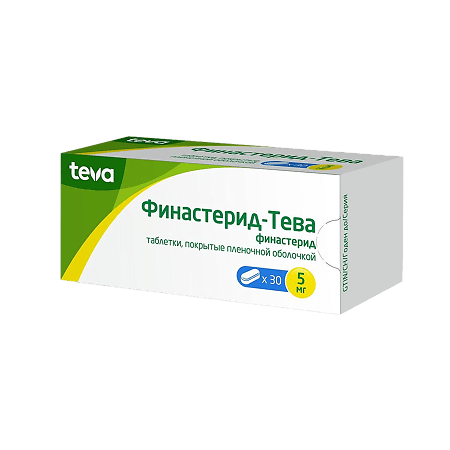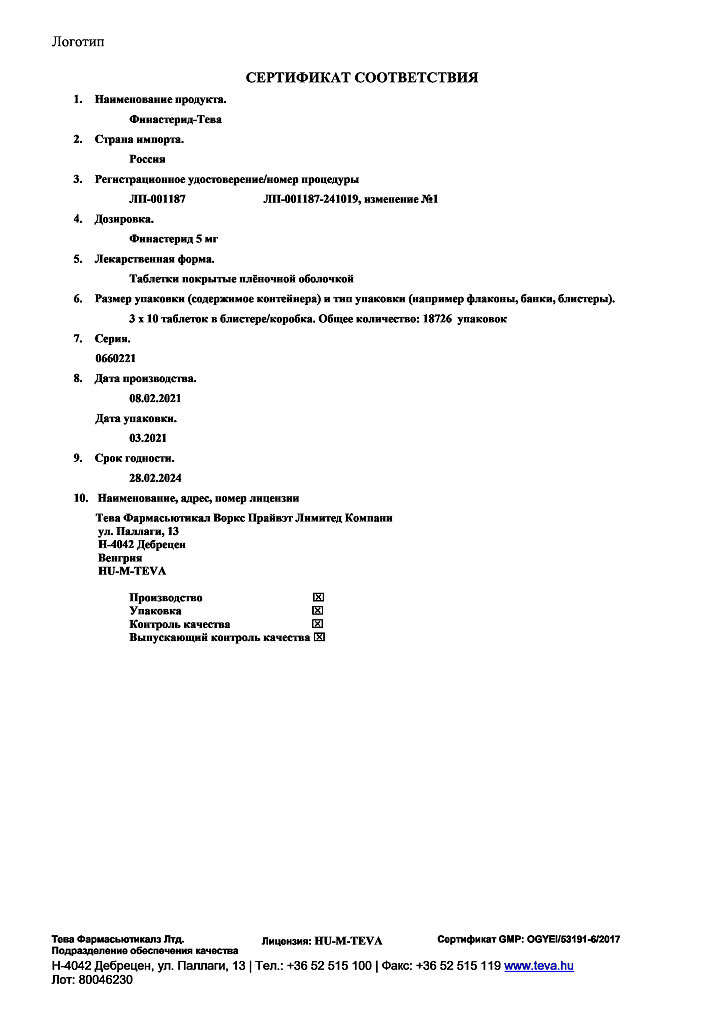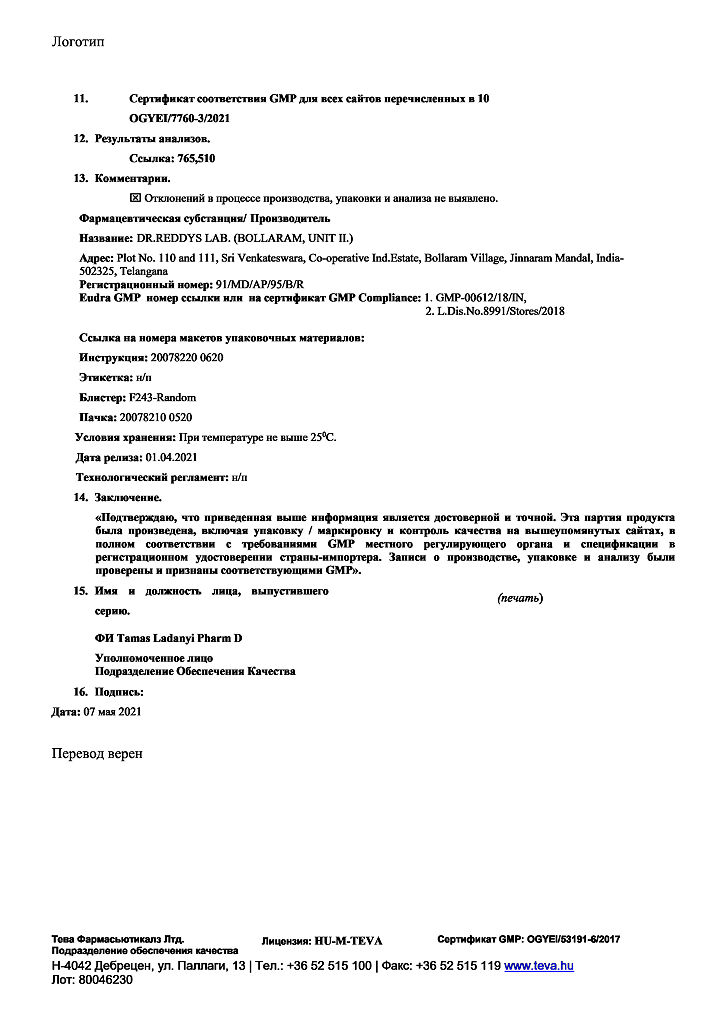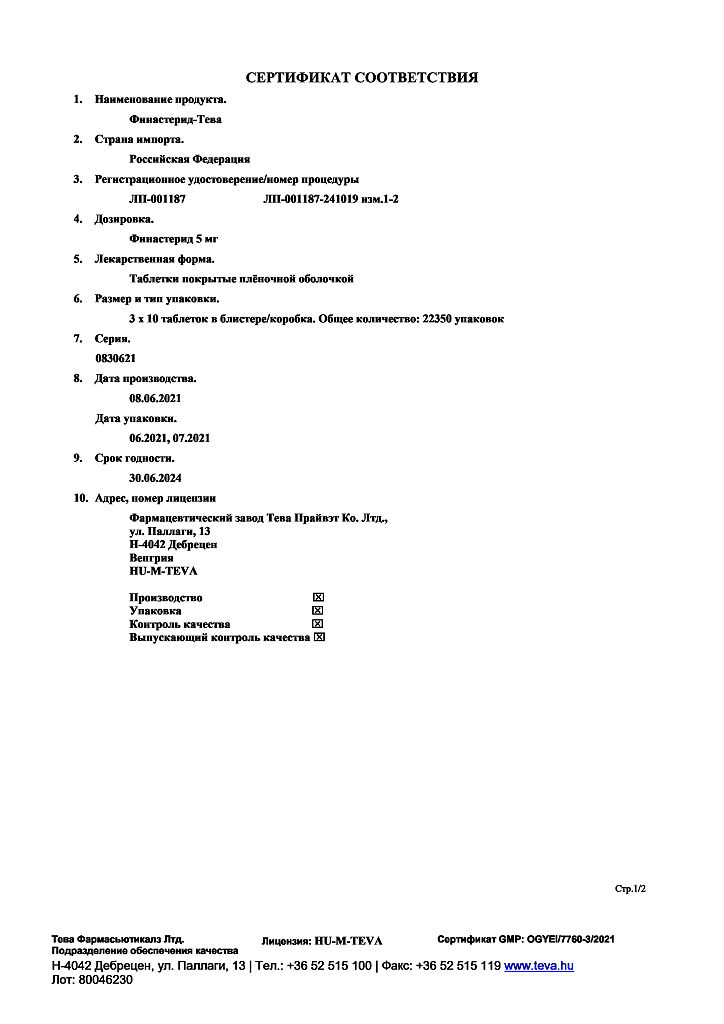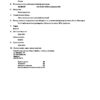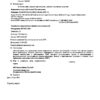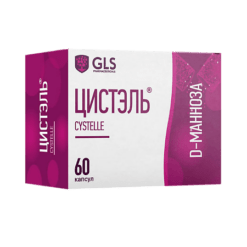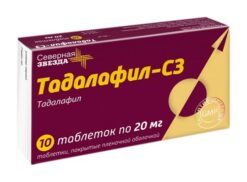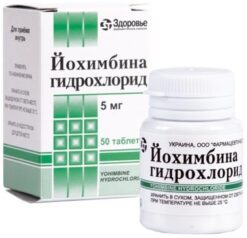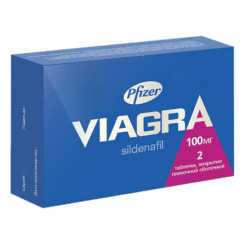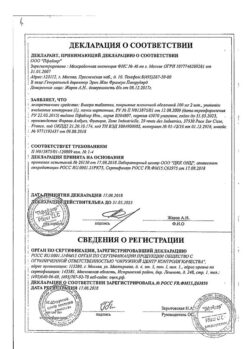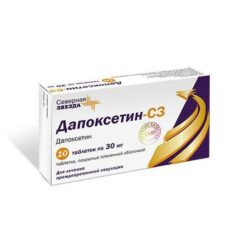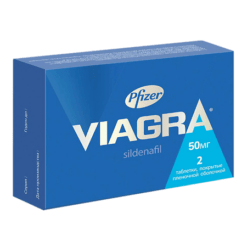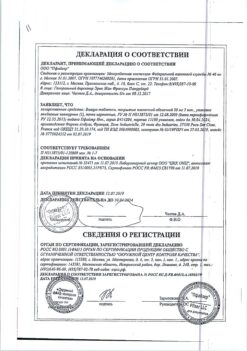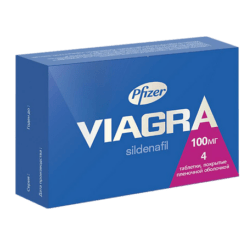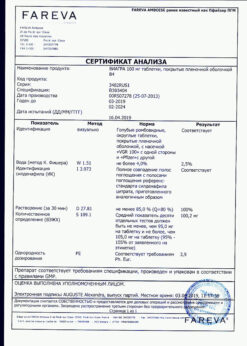No products in the cart.
Finasteride-Teva, 5 mg 30 pcs
€9.86 €8.63
Description
Pharmacotherapeutic group: 5-alpha reductase inhibitor
ATCode: G04CB01
Pharmacological properties
Pharmacodynamics
Finasteride, a synthetic 4-azosteroid, is a specific inhibitor of 5-alpha reductase type II, an intracellular enzyme that converts testosterone to the more active androgen, dihydrotestosterone (DHT). In benign prostatic hyperplasia (BPH), its increase depends on the conversion of testosterone to DHT in the prostate gland. Finasteride is highly effective in reducing the concentration of DHT in both blood and prostate tissue.
The suppression of DHT formation is accompanied by a decrease in the size of the prostate gland, an increase in the maximum urine flow rate and a decrease in the severity of symptoms associated with prostatic hyperplasia.
Finasteride has no affinity for androgen receptors. The drug has no significant effect on lipid profile (i.e., total cholesterol, low-density lipoproteins (LDL), high-density lipoproteins (HDL), and triglycerides) and bone mineral density. Finasteride has no effect on plasma levels of cortisol, estradiol, prolactin, thyrotropic hormone and thyroxine compared to placebo.
Single administration of finasteride at a dose of 5 mg leads to a rapid decrease in plasma concentrations of DHT with a maximum effect after 8 hours. Although plasma concentrations of finasteride fluctuate over 24 hours, DHT concentrations remain constant. This means that plasma finasteride concentrations are not directly related to plasma DHT concentrations.
In patients with BPH who took finasteride at a dose of 5 mg daily for 4 years, there was an approximately 70% reduction in plasma DHT concentrations, which was associated with a reduction in prostate volume of approximately 20%. In addition, prostate-specific antigen (PSA) concentrations were reduced by approximately 50% from baseline, suggesting a reduction in prostate epithelial cell growth. The decrease in DHT concentration and the reduction in the severity of prostatic hyperplasia, accompanied by a decrease in PSA concentration, persisted in the studies for up to 4 years. In these studies, plasma testosterone levels increased by approximately 10-20% while remaining within physiological limits.
When finasteride was used for 7-10 days in patients referred for prostatectomy, there was an approximately 80% reduction in prostate tissue DHT concentrations and a 10-fold increase in prostate tissue testosterone concentrations compared to pre-treatment concentrations.
The long-term (more than 4 years) use of finasteride in patients with BPH and moderately severe or significantly severe symptoms of the disease was found to reduce the risk of urologic complications (surgery: transurethral resection of the prostate or prostatectomy; acute urinary retention requiring catheterization) by 51% and was accompanied by a pronounced and sustained reduction in prostate volume, as well as a sustained increase in maximum urine flow rate and improvement in symptoms.
In patients treated with finasteride for 3 months when a decrease in prostate volume of approximately 20% is achieved, the prostate volume returns to its previous size after 3 months if treatment is discontinued.
In summary, treatment with finasteride helps reduce the size of the enlarged prostate, increases the rate of urine flow, and reduces symptoms associated with BPH.
Pharmacokinetics
Absorption. Maximum plasma concentration (Cmax) of finasteride is reached approximately 2 hours after oral administration. Absorption of finasteride from the gastrointestinal tract is completed 6-8 hours after oral administration.
The bioavailability of finasteride when administered orally is approximately 80% of the intravenous reference dose and is independent of food intake.
Distribution. The binding to plasma proteins is approximately 93%. Plasma clearance is 165 ml/min, volume of distribution is 76 l.
In long-term therapy there is a slow accumulation of finasteride in small amounts. With daily oral administration of finasteride at a dose of 5 mg, its minimum equilibrium plasma concentration reaches 8-10 ng/ml and remains stable over time.
In patients treated with finasteride for 7-10 days, the drug is detectable in cerebrospinal fluid. When finasteride is taken at a dose of 5 mg per day, the presence of the drug is also noted in seminal fluid. The content of finasteride in seminal fluid was 50 to 100 times less than the finasteride dose (5 mg), which had no effect on circulating DHT concentrations in adult men.
Metabolism. The half-life (T1/2) of finasteride averages 6 hours.
Extraction. In men, after a single oral dose of 14C-labeled finasteride, 39% of the dose taken is excreted by the kidneys as metabolites (unchanged finasteride is virtually not excreted by the kidneys); 57% is excreted through the intestine. In this study, 2 metabolites of finasteride were identified that have a negligible inhibitory effect on 5-alpha reductase compared with finasteride.
The excretion rate of finasteride decreases slightly in old age. T1/2 increases with age: in men 18-60 years old the average T1/2 is 6 hours and in men over 70 years old it is 8 hours. These changes are not clinically significant and, therefore, there is no need to reduce the dose of the drug in elderly men.
In patients with chronic renal impairment (creatinine clearance (CK) of 9 to 55 mL/min), the distribution of labeled 14C finasteride at a single dose was not different from that of healthy volunteers. The binding of finasteride to plasma proteins was also not different in patients with impaired renal function.
In renal impairment, part of the metabolites of finasteride that are normally excreted by the kidneys are excreted through the intestine. This is manifested by an increase in the amount of finasteride metabolites in the feces with a corresponding decrease in their concentration in the urine. No dose adjustment is required in patients with renal insufficiency on dialysis.
Indications
Indications
Finasteride-Teva is indicated only for adult men over 18 years of age.
• Treatment and control of benign prostatic hyperplasia (BPH), prevention of urological complications with the aim of:
– reducing the risk of acute urinary retention;
– reducing the risk of the need for surgical interventions, including transurethral resection of the prostate gland and prostatectomy.
• Treatment to reduce the size of an enlarged prostate gland, improve urine flow, and reduce symptoms associated with BPH.
• Combined with the alpha blocker doxazosin to reduce the risk of progression of symptoms associated with BPH.
Pharmacological effect
Pharmacological effect
Pharmacotherapeutic group: Drugs used in urology; agents for the treatment of benign prostatic hyperplasia; testosterone 5-alpha reductase inhibitors.
ATX code: G04CB01
Pharmacological properties
Pharmacodynamics
Finasteride, a synthetic 4-azosteroid, is a specific inhibitor of type II 5-alpha reductase, an intracellular enzyme that converts testosterone into a more active androgen, dihydrotestosterone (DHT). In benign prostatic hyperplasia (BPH), its enlargement depends on the conversion of testosterone to DHT in the prostate gland. Finasteride is highly effective in reducing the concentration of DHT in both the blood and prostate tissue.
Suppression of DHT formation is accompanied by a decrease in the size of the prostate gland, an increase in the maximum flow rate of urine and a decrease in the severity of symptoms associated with prostatic hyperplasia.
Finasteride has no affinity for androgen receptors. The drug does not have a significant effect on the lipid profile (i.e. total cholesterol, low-density lipoprotein (LDL), high-density lipoprotein (HDL) and triglycerides) and bone mineral density. Finasteride has no effect on plasma levels of cortisol, estradiol, prolactin, thyroid-stimulating hormone and thyroxine compared to placebo.
A single dose of finasteride at a dose of 5 mg leads to a rapid decrease in the concentration of DHT in the blood plasma with the maximum effect achieved after 8 hours. Although the plasma concentration of finasteride fluctuates over a 24-hour period, the concentration of DHT remains constant. This means that the plasma concentration of finasteride is not directly related to the plasma concentration of DHT.
In patients with BPH who took finasteride 5 mg daily for 4 years, there was an approximately 70% decrease in plasma DHT concentrations, which was associated with an approximately 20% decrease in prostate volume. In addition, prostate-specific antigen (PSA) concentrations were reduced by approximately 50% compared with baseline concentrations, suggesting decreased prostate epithelial cell growth. The decrease in DHT concentration and decrease in the severity of prostatic hyperplasia, accompanied by a decrease in PSA concentration, persisted in studies for up to 4 years. In these studies, the content of testosterone in the blood plasma increased by approximately 10-20%, remaining within the physiological range.
When finasteride was used for 7-10 days in patients referred for prostatectomy, there was a decrease in the concentration of DHT in prostate tissue by approximately 80% and an increase in the concentration of testosterone in prostate tissue by 10 times compared with the concentration before treatment.
It was found that long-term (more than 4 years) use of finasteride in patients with BPH and moderate or severe symptoms of the disease reduced the risk of developing urological complications (surgical interventions: transurethral resection of the prostate or prostatectomy; acute urinary retention requiring catheterization) by 51% and was accompanied by a pronounced and persistent decrease in the volume of the prostate gland, as well as a persistent increase in the maximum flow rate of urine and improvement symptoms.
In patients taking finasteride for 3 months, prostate volume, which decreased by approximately 20%, returned to its previous value within 3 months after stopping treatment.
Thus, treatment with finasteride helps to reduce the size of an enlarged prostate gland, increases the flow rate of urine and reduces symptoms associated with BPH.
Pharmacokinetics
Absorption
The maximum concentration (Cmax) of finasteride in blood plasma is reached approximately 2 hours after oral administration. Absorption of finasteride from the gastrointestinal tract is completed 6-8 hours after oral administration.
The bioavailability of finasteride when administered orally is approximately 80% of the intravenous reference dose and is independent of food intake.
Distribution
The binding to plasma proteins is approximately 93%. Plasma clearance is 165 ml/min, volume of distribution is 76 l.
With long-term therapy, a slow accumulation of finasteride in small quantities is observed. When finasteride is taken orally daily at a dose of 5 mg, its minimum equilibrium concentration in blood plasma reaches 8-10 ng/ml and remains stable over time.
In patients treated with finasteride for 7-10 days, the drug is detected in the cerebrospinal fluid. When taking finasteride at a dose of 5 mg per day, the presence of the drug is also noted in the seminal fluid. The content of finasteride in seminal fluid was 50-100 times lower than the dose of finasteride (5 mg), which did not affect the concentration of circulating DHT in adult men.
Metabolism
The half-life (T1/2) of finasteride is on average 6 hours.
Removal
In men, after a single oral dose of 14C-labeled finasteride, 39% of the dose taken is excreted by the kidneys in the form of metabolites (unchanged finasteride is practically not excreted by the kidneys); 57% – through the intestines. This study identified 2 metabolites of finasteride that have negligible 5-alpha reductase inhibitory effects compared to finasteride.
Elderly patients
In old age, the rate of elimination of finasteride decreases slightly. With age, T1/2 increases: in men 18-60 years old, the average T1/2 is 6 hours, and in men over 70 years old – 8 hours. These changes are not clinically significant and, therefore, dosage reduction in elderly men is not required.
Patients with renal failure
In patients with chronic renal failure (creatinine clearance (CC) from 9 to 55 ml/min), the distribution of 14C-labeled finasteride when taking a single dose did not differ from that in healthy volunteers. The association of finasteride with plasma proteins also did not differ in patients with impaired renal function.
In case of renal failure, part of the metabolites of finasteride, which is normally excreted by the kidneys, is excreted through the intestines. This is manifested by an increase in the amount of finasteride metabolites in feces with a corresponding decrease in their concentration in urine. In patients with renal failure on dialysis, no dose adjustment is required.
Patients with liver dysfunction
The effect of hepatic impairment on the pharmacokinetics of finasteride has not been studied.
Special instructions
Special instructions
Effect on PSA levels and diagnosis of prostate cancer
To date, the clinical benefits of using Finasteride-Teva in patients with prostate cancer have not been proven. In controlled clinical trials, PSA levels and prostate biopsy results were monitored in patients with BPH and elevated PSA concentrations. It was found that the use of Finasteride-Teva does not appear to change the incidence of prostate cancer detection and does not affect the incidence of prostate cancer in patients treated with Finasteride-Teva or placebo.
Before starting treatment and periodically during treatment with Finasteride-Teva, it is recommended to conduct a rectal examination and use other methods for diagnosing prostate cancer. Serum PSA determination is also used to detect prostate cancer. In general, an initial PSA concentration above 10 ng/ml indicates the need for further examination of the patient and a biopsy. When determining the PSA concentration within 4-10 ng/l, further examination of the patient is necessary. PSA concentrations in men with and without prostate cancer can be largely the same, so in men with BPH, normal PSA values do not rule out prostate cancer, regardless of treatment with Finasteride-Teva. An initial PSA concentration below 4 ng/ml also does not exclude prostate cancer.
Finasteride-Teva causes a decrease in serum PSA concentrations of approximately 50% in patients with BPH, even in the presence of prostate cancer. This fact must be taken into account when assessing PSA levels in patients with BPH treated with Finasteride-Teva, since a decrease in PSA concentrations does not exclude the presence of concomitant prostate cancer. This reduction can be expected over any range of PSA concentrations, although it may differ in individual patients. An analysis of PSA values in more than 3000 patients in a 4-year, double-blind, placebo-controlled study confirmed that in those taking finasteride for 6 months or more, PSA values should be doubled to compare them with normal values for this indicator in patients not receiving treatment with the drug. This adjustment preserves the sensitivity and specificity of the PSA test and the ability to detect prostate cancer.
Any persistent increase in PSA concentration in patients treated with finasteride requires careful evaluation to determine the cause, which may be non-compliance with Finasteride-Teva.
Finasteride-Teva does not significantly reduce the percentage of free PSA (the ratio of free PSA to total PSA). This indicator remains constant even under the influence of the drug Finasteride-Teva. If the percentage of free PSA is used to diagnose prostate cancer, correction of the value of this indicator is not necessary.
Effect on laboratory parameters
PSA content
Plasma PSA concentration correlates with patient age and prostate volume, and prostate volume, in turn, depends on patient age. When determining PSA concentration, it should be taken into account that this indicator decreases in patients taking Finasteride-Teva. In most patients, a rapid decrease in PSA levels is observed in the first months of therapy, after which it stabilizes at a new level, which is usually approximately half the value measured before the start of therapy. In this regard, in patients taking Finasteride-Teva for 6 months or more, the PSA concentration should be doubled to compare it with normal values in men not taking Finasteride-Teva.
Risk of teratogenic effect for a male fetus
Pregnant women, as well as women of childbearing age, should avoid contact with crushed or damaged Finasteride-Teva tablets due to the possibility of absorption of finasteride, due to the high risk of teratogenic effect for the male fetus (see section “Use during pregnancy and breastfeeding”). Finasteride-Teva tablets are film-coated, which prevents contact with the active ingredient, provided that the tablets are not crushed and have not lost their integrity.
Breast cancer in men
Due to the fact that post-marketing reports of cases of breast cancer in men taking finasteride have been received, the attending physician should immediately report any changes in the patient’s mammary gland, such as: swelling, enlargement of the mammary glands, discomfort in them, discharge from the nipple.
Mood changes and depression
Mood changes, including depression and less frequently suicidal ideation, have been observed in patients taking finasteride 5 mg. It is necessary to monitor the appearance of psychopathological symptoms; if they appear, the patient should be referred for consultation with a specialist.
Impact on the ability to drive vehicles and machinery
No adverse effects of the drug on the ability to drive vehicles or operate machinery have been reported.
Active ingredient
Active ingredient
Finasteride
Composition
Composition
1 tablet contains:
active ingredient: finasteride 5.0 mg;
excipients: lactose monohydrate (200 mesh) 108.0 mg, pregelatinized starch 5.0 mg, sodium lauryl sulfate 0.5 mg, sodium carboxymethyl starch (type A) 10.0 mg, povidone-K30 2.0 mg, microcrystalline cellulose (PH-102) 18.5 mg, magnesium stearate 1.0 mg, film shell Opadry blue 03G20795 (hypromellose-6cP (E464) 2.50 mg, titanium dioxide (E171) 0.7944 mg, macrogol-6000 0.40 mg, macrogol-400 0.25 mg, indigo carmine aluminum varnish (E132) 0.0556 mg).
Pregnancy
Pregnancy
The use of Finasteride-Teva is contraindicated during pregnancy and women of childbearing age. Due to the ability of type II 5-alpha reductase inhibitors to suppress the conversion of testosterone to dihydrotestosterone, these drugs, including finasteride, when used in pregnant women can cause abnormalities in the development of the external genitalia in the male fetus.
Finasteride-Teva is not indicated for use in women. There are no data on the excretion of finasteride into breast milk.
Contraindications
Contraindications
• Hypersensitivity to finasteride and/or to any of the excipients in the drug.
• According to its registered indication, Finasteride-Teva is not indicated for use in women, children and adolescents under 18 years of age (see section “Use during pregnancy and breastfeeding”).
• Rare hereditary galactose intolerance, lactase deficiency, glucose-galactose malabsorption syndrome.
With caution
Patients with large residual urine volumes and/or significantly reduced urinary flow should be regularly monitored by a physician for obstructive uropathy.
The drug should be prescribed with caution to patients with liver failure and the elderly.
Side Effects
Side Effects
Adverse reactions identified during clinical studies
The study assessed the safety of 1,524 patients taking finasteride versus 1,516 patients taking placebo over a 4-year period.
Seventy-four patients (4.9%) in the finasteride group discontinued therapy due to drug-related adverse reactions, compared with 50 patients (3.3%) in the placebo group. Fifty-seven patients (3.7%) in the finasteride group and 32 patients (2.1%) in the placebo group discontinued treatment due to sexual dysfunction-related adverse reactions, which were the most commonly reported adverse reactions.
The only clinical adverse reactions considered possibly, likely, or definitely drug-related by the investigators and with an incidence greater than 1% with finasteride and greater than placebo during the 4-year study period were those related to sexual function, breast tenderness, and skin rash.
In the first year of treatment, sexual dysfunction was detected in 8.1% of patients in the finasteride group and 3.7% in the placebo group; decreased libido – in 6.4% and 3.4%; and ejaculation disorders – in 0.8% and 0.1%, respectively. When using finasteride in years 2-4 of the study, the incidence of the above adverse reactions in patients taking finasteride was not significantly different from that in patients taking placebo.
The total incidence of adverse reactions during 2-4 years of the study was: impaired sexual function (5.1% in the finasteride group and 5.1% in the placebo group), decreased libido (2.6% in both groups), impaired ejaculation (0.2% and 0.1%, respectively). Within 1 year, a decrease in ejaculate volume was detected in 3.7% and 0.8% in the finasteride and placebo groups, respectively; and during 2-4 years of the study – 1.5% and 0.5%, respectively. Breast enlargement (0.5% and 0.1%, respectively), breast tenderness (0.4% and 0.1%, respectively), and skin rash (0.5% and 0.2%, respectively) were also reported at 1 year. Over the course of 2-4 years, the total incidence of these phenomena was: breast enlargement (1.8% and 1.1%, respectively), pain in the mammary glands (0.7% and 0.3%, respectively), skin rash (0.5% and 0.1%, respectively).
In a 7-year placebo-controlled study that included 18,882 healthy men, needle biopsies (9,060 men) identified prostate cancer in 18.4% of patients receiving finasteride and in 24.4% of patients receiving placebo. 280 men (6.4%) in the finasteride group and 237 men (5.1%) in the placebo group had prostate cancer, which was assessed by needle biopsy as Gleason score 7-10. Additional analysis suggested that the increased incidence of high-grade cancer observed in the finasteride group may be due to diagnostic bias associated with the drug’s effect on prostate volume. In approximately 98% of all cancers diagnosed, the tumor was classified as intracapsular (stage T1 or T2) at diagnosis. The clinical significance of the findings regarding Gleason score 7–10 prostate cancer in this study is unknown.
In the study, the safety and tolerability profile of combination treatment with finasteride 5 mg per day and doxazosin 4 mg or 8 mg per day was comparable to the safety and tolerability of each of these agents separately.
During a 4- to 6-year placebo-controlled study using the active drug as a control in 3047 men, there were 4 cases of breast cancer in men taking finasteride and no cases in men not taking finasteride. In another 4-year placebo-controlled study of 3,040 men, there were 2 cases of breast cancer in men receiving placebo and no cases in men taking finasteride. In a 7-year placebo-controlled study of 18,882 men, there was 1 case of breast cancer in a man receiving finasteride and 1 case of breast cancer in a man receiving placebo. There have been post-marketing reports of cases of breast cancer in men taking finasteride. The relationship between long-term use of finasteride and the occurrence of breast neoplasia in men has not yet been established.
Post-registration experience of use
The following additional adverse reactions of finasteride have been reported in post-marketing experience.
Adverse effects are classified according to the frequency of their development: very common (≥ 1/10), common (≥ 1/100, < 1/10), uncommon (≥ 1/1000, < 1/100), rare (≥ 1/10000, < 1/1000), very rare (< 1/10000), frequency unknown - the available data are insufficient to estimate the frequency side effect.
Immune system disorders: frequency unknown – hypersensitivity reactions and angioedema (including swelling of the lips, tongue, larynx and face).
Mental disorders: often – decreased libido; frequency unknown – depression, decreased libido, persisting after cessation of treatment; feeling of fear.
Cardiac disorders: frequency unknown – palpitations.
Disorders of the liver and biliary tract: frequency unknown – increased activity of liver enzymes.
Disorders of the skin and subcutaneous tissues: infrequently – rash; frequency unknown – itching, urticaria.
Disorders of the reproductive system and mammary glands: often – impotence, decreased ejaculate volume; infrequently – ejaculation disorders, enlargement and soreness of the mammary glands; frequency unknown – testicular soreness, erectile dysfunction that persists after cessation of treatment, male infertility and/or decreased quality of seminal fluid, hematospermia.
Laboratory indicators
When assessing PSA laboratory parameters, the decrease in its concentration in patients taking finasteride should be taken into account.
There were no other differences in the levels of standard laboratory parameters between the finasteride and placebo groups. Cases of breast cancer in men have been reported in clinical trials and during the post-marketing period (see section “Special Instructions”).
Interaction
Interaction
No clinically significant interactions of finasteride with other drugs have been identified.
Finasteride does not appear to have a significant effect on the cytochrome P450 system and the metabolism of drugs associated with this system.
No clinically significant interactions were identified with the combined use of finasteride with propranolol, digoxin, glibenclamide, warfarin, theophylline and phenazone.
Despite the lack of specific drug interaction studies, in clinical studies finasteride was used simultaneously with angiotensin-converting enzyme (ACE) inhibitors, paracetamol, acetylsalicylic acid, alpha-blockers, beta-blockers, slow calcium channel blockers, nitrates in various dosage forms, diuretics, H2-histamine receptor blockers, lipid-lowering drugs – HMG-CoA reductase inhibitors, non-steroidal anti-inflammatory drugs (NSAIDs), quinolone derivatives and benzodiazepines without any clinically significant adverse interactions.
Overdose
Overdose
There is evidence that patients receiving finasteride at a dose of up to 400 mg once, as well as at a dose of up to 80 mg per day for 3 months, did not experience any symptoms of overdose.
There are no specific recommendations for the treatment of Finasteride-Teva overdose.
Storage conditions
Storage conditions
Store at a temperature not exceeding 25 C.
Keep out of the reach of children!
Shelf life
Shelf life
3 years.
Do not use after expiration date.
Manufacturer
Manufacturer
Teva Pharmaceutical Works Private Limited Company, Hungary
Additional information
| Shelf life | 3 years. Do not use after the expiration date. |
|---|---|
| Conditions of storage | Store at a temperature not exceeding 25 oC. Keep out of reach of children! |
| Manufacturer | Teva Pharmaceutical Works Production Limited Company, Hungary |
| Medication form | pills |
| Brand | Teva Pharmaceutical Works Production Limited Company |
Related products
Buy Finasteride-Teva, 5 mg 30 pcs with delivery to USA, UK, Europe and over 120 other countries.

